Tag: temptag
How to Create and Market a White-Label App: Business Models, Technologies and Cost
Today, it’s hard to imagine a business without a mobile presence. Mobile websites have become standard long ago, and now mobile applications are the new must-have for businesses.
However, not all businesses are ready to invest in lengthy and costly custom development. This is where white-label apps come in.
In this article, you’ll learn how to create a white-label app and, more importantly, how to price white-label products.
What is a white-label app?
A white-label app is a piece of software one company makes to sell to other companies. The companies that buy white-label apps can customize them and add their branding to use these ready-made apps as their own.
White-label apps offer a win-win deal for both parties: a white-label app development company needs to build software once and then scale its revenue by selling it to other businesses. Their B2B clients, on the other hand, save time and money and get a ready-made solution they can customize to their needs.
White-labeling is a viable business strategy that you can scale and earn money for years by investing in its development once.
White-label apps work for many industries, from e-commerce and food delivery to sharing economy apps and tourism. Let me give you an example.
- You build a white-label app for a specific industry, such as scooter sharing.
- Another company wants to start a scooter-sharing business, but they’re not sure about developing their app yet, because it’s costly — they’d rather start with a simple MVP and test the waters
- You offer them your white-label app and help them customize it with their own branding, aesthetics, and even functionality to some extent.
- In the eyes of scooter-sharing users, the app was built by a scooter-sharing provider, not by you.
- The app has everything needed for scooter sharing, so you can re-sell it again and again to other similar businesses with minor changes and new unique branding.
The demand for white-label apps is growing as more and more businesses see the value in offering mobile apps to their customers. The demand drives the supply as well.
However, white-label apps have their limitations and challenges, which we’ll also cover in this article. If you’re considering becoming a white-label app provider and wondering where to start, read on!
Pros and cons of white-label app development
White-label apps have a pretty ambivalent reputation: some say they’re too simplistic to bring real value or too risky because you don’t know what’s under the hood until you purchase one.
- Multiple monetization options
- Ability to turn existing software into a white-label solution
- Unlimited business and revenue scalability
- Clone apps risk being deleted
- The need to balance functionality and simplicity
The discourse around white-label apps is hot, but it’s undeniable that the demand is high, and businesses are ready to purchase them. Let’s discuss the pros and cons of building a white-label app for your business and cover the main challenges.
Pros of building a white-label app
You can turn your existing custom app into a white-label app
If you already have a custom-made application and full rights to its code, you can turn it into a white-label app and make a profit. This is a great way to open a new revenue stream and multiply your investment returns.
Turning a custom solution into a white-label app will still take time and effort, but it will we faster and cheaper than building an app from scratch.
You can sell and operate your white-label app in multiple ways
There are multiple ways to build and sell your white-label solution to other businesses. You can either sell copies of your app to different businesses that will be their sole owners and users, or you can support multiple businesses from a single code base.
This is called single-tenant (backend-based) or multi-tenant (SaaS) white labeling. I’ll talk about both approaches later in this article.
You can scale your revenue, and only the market is your limit
You can sell your white-label software to as many businesses as you want, so your target market only defines the limit. This is amazing because you just need to invest in your app once and monetize it for years.
White-label software development challenges
Generic apps risk being deleted from app markets
There are rumors app markets don’t accept that template apps like App Store or Google Play according to the new guidelines. Some apps may have indeed been deleted, but you can easily avoid them with sufficient customization.
To avoid issues with app markets, offer multiple customization abilities: allow your customers to change not only color but also the shape of UI elements and even make layout changes.
The price is a core factor, and it may limit your app complexity
Businesses buy white-label apps because they’re a cheaper alternative to custom development. As a white-label software provider, you need to strike a perfect balance between your app’s complexity and price.
On the one hand, you need to keep your solution simple so the price isn’t too high. On the other hand, white-label apps aren’t often trusted because of their low quality. You must ensure you build high-quality software that can be customized and used without significant issues.
It’s important not to overcomplicate your app with third-party integrations and sophisticated functionality. Usually, businesses that require this level of complexity prefer custom development, as the price won’t be that different.
White-label app examples
AppInstitute
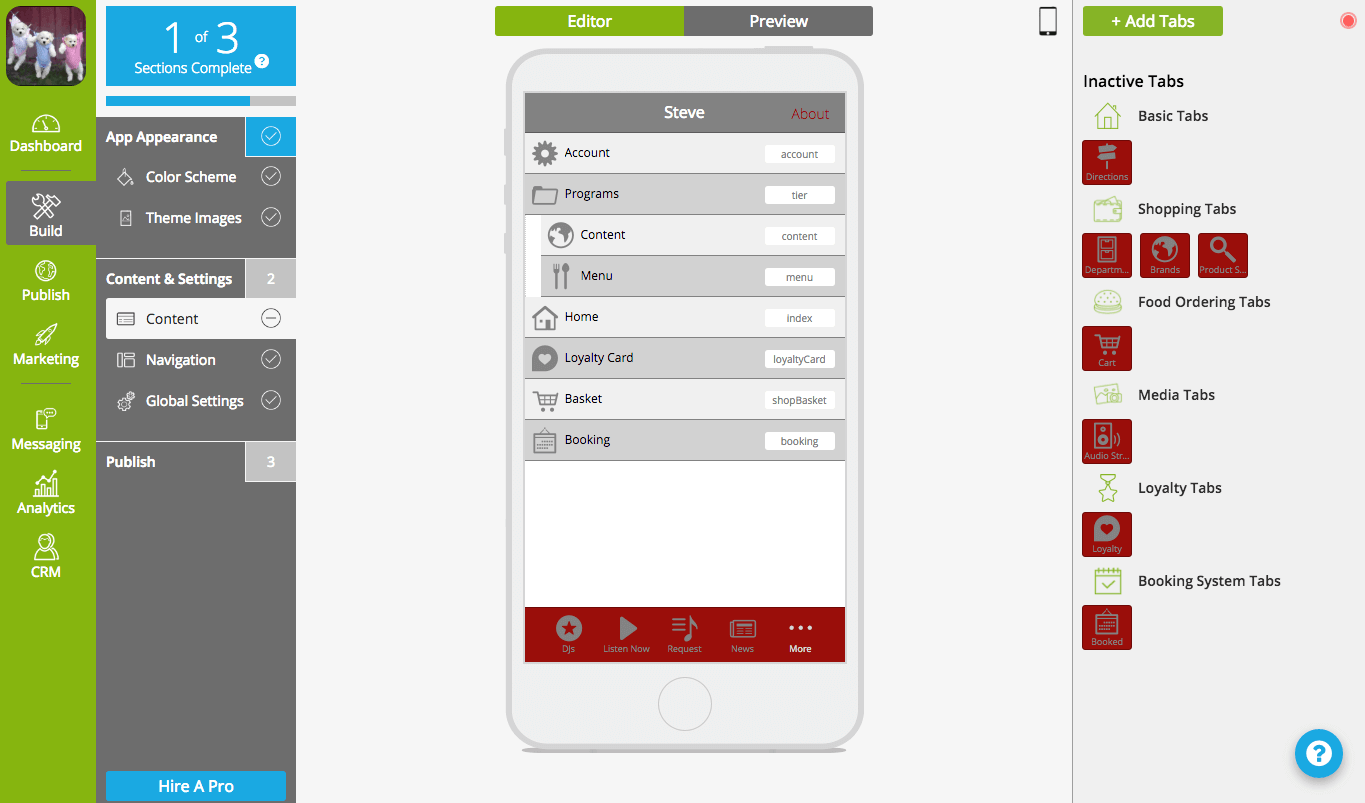
This is a white-label app builder for small businesses. It features a drag-and-drop interface that’s easy to grasp even if you’re a non-technical person. AppInstitute offers endless templates for all kinds of businesses, from coffee shops and hotels to fitness centers and restaurants.
It also categorizes templates by the app’s purpose, for example, selling products, increasing loyalty, or getting bookings. The AppInstitute apps allow for customization, support multiple languages and push notifications.
Wix

This is a famous white-label website builder that allows businesses and individuals to create websites in a matter of minutes. It has an easy drag-and-drop function that allows building a custom, unique website — no coding experience required.
Users can build their Wix website for free or shift to paid plans that cost $5, $10, $14, and $29 per month. The data space depends on the plan you get, and the bandwidth for all plans except for the two last plans is limited.
Wix’s database features over 800 templates for all kinds of businesses that users can further customize to their needs. Fonts, colors, icons, and graphic elements are all customizable.
Wix also offers an SEO planning service to help businesses rank higher in Google search.
Elluminati
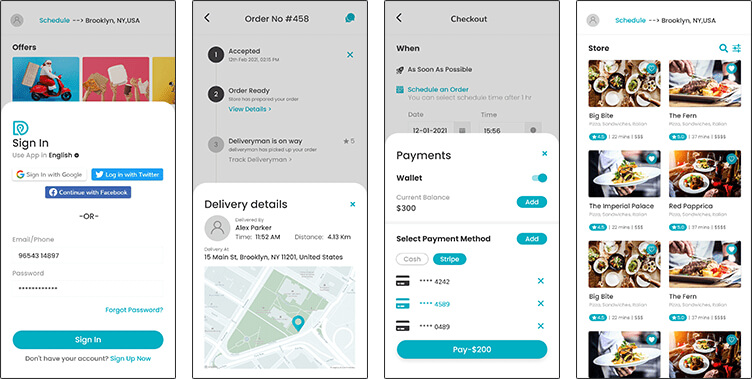
This company offers restaurants and other businesses a white-label solution for their delivery services. With Elluminati, businesses can build client-oriented websites and mobile apps that allow them to order and pay for food online.
Other possibilities include table reservation, QR code scanning, loyalty program functionality, order scheduling, tipping, and more. It has everything a restaurant customer needs to order food and manage their order.
Other types of white-label apps Elluminati offers are:
- Taxi
- Repair services
- Crypto exchange services
- Delivery services
Two main models of selling white-label apps
As I already mentioned, there are two main ways to sell white-label apps:
- SaaS model — you develop a product with a set of functionality and customization abilities. All your customers use products from a single platform but can customize their versions independently.
- Backend-based model — you reuse a single backend code and customize the front end for each customer. They get an independent copy of your product with a changed front-end part.
These two options determine your marketing and business structure and your white-label product’s architecture, functionality, and cost.
Let’s explore the differences between a SaaS and a backend-based model and discuss their pros and cons.
SaaS model
The Sofware-as-a-Service model, or a multi-tenant model, suggests that multiple people use your product at the same time. For this, you need to develop a single platform with a set functionality that allows customization of the UI elements.
The architecture of white-label SaaS products is this: a single server stores all customer data and hosts the software.
The main advantage of this model is its centralized architecture. It allows for fast maintenance, support, QA, testing, deployment, and easy updates. If you detect a bug or a breach, you can quickly fix it and push it to all your users simultaneously.
SaaS products are often subscription-based. It means you can predict your income and have a steady monthly flow. This white-label software business also allows you to build a relatively complex platform without sacrificing the price. As you’ll have multiple tenants, you can divide the cost among them.
The main focus in the SaaS model for businesses is cost-efficiency and quick deployment rather than customization, so your marketing strategy should highlight the benefits of getting their solution up and running in a matter of minutes.
It’s essential to explain to your customers the customization limitations before they purchase your solution. Here are some ways you can do it:
- Provide your customers with a demo in exchange for their email
- Provide a free trial version of your product
- Showcase the features and optimization possibilities on your landing page, videos, presentations, and other marketing materials
Backend-based model
According to this model, you provide your customers with a singular product copy.
Usually, you’ll customize the front-end part of the app for each separate client. It will take more time than simply giving access to a SaaS platform, but your customers will have more options for customizing their apps.
The only part you fully resell is the backend part of the solution. The architecture of each copy is the same, but UI customization allows your customers to get a more personalized product.
Here are the specific properties of an architecture needed for this model:
- A database is isolated, so you don’t store all your customers’ data in one place
- You can make changes to apps independently, and they won’t be pushed to your other customers’ apps
- Your customers are independent and have complete control over the updates
Some white-label app providers sell the apps completely, giving customers all the code rights. We at Mobindustry audit, customize, and even rewrite such applications, as businesses don’t know what’s under the hood until they purchase the solution. Such an approach is somewhat risky because the quality is often low.
Other providers continue to support their customers and update the code regularly. The challenge here is to update multiple versions of the same app. If you have many clients, supporting them can become tricky, as you won’t be able to automatically push the same update to everyone.
Also, some businesses purchase backends made by other companies and create custom front ends in order to resell these apps to other businesses. This means a single white-label software can go through multiple resellers before becoming a fully-fledged product.
White-label app customization
What customization abilities can you give to businesses that will purchase your white-label app? What are the limitations? Let’s explore.
App icon and Splash screen
An icon is the face of the app, and it should be recognizable and unique. It’s important that you add their icon and change its shape. The icon should correspond to the app market guidelines, so make sure you provide your customers with a construction kit and recommendations.
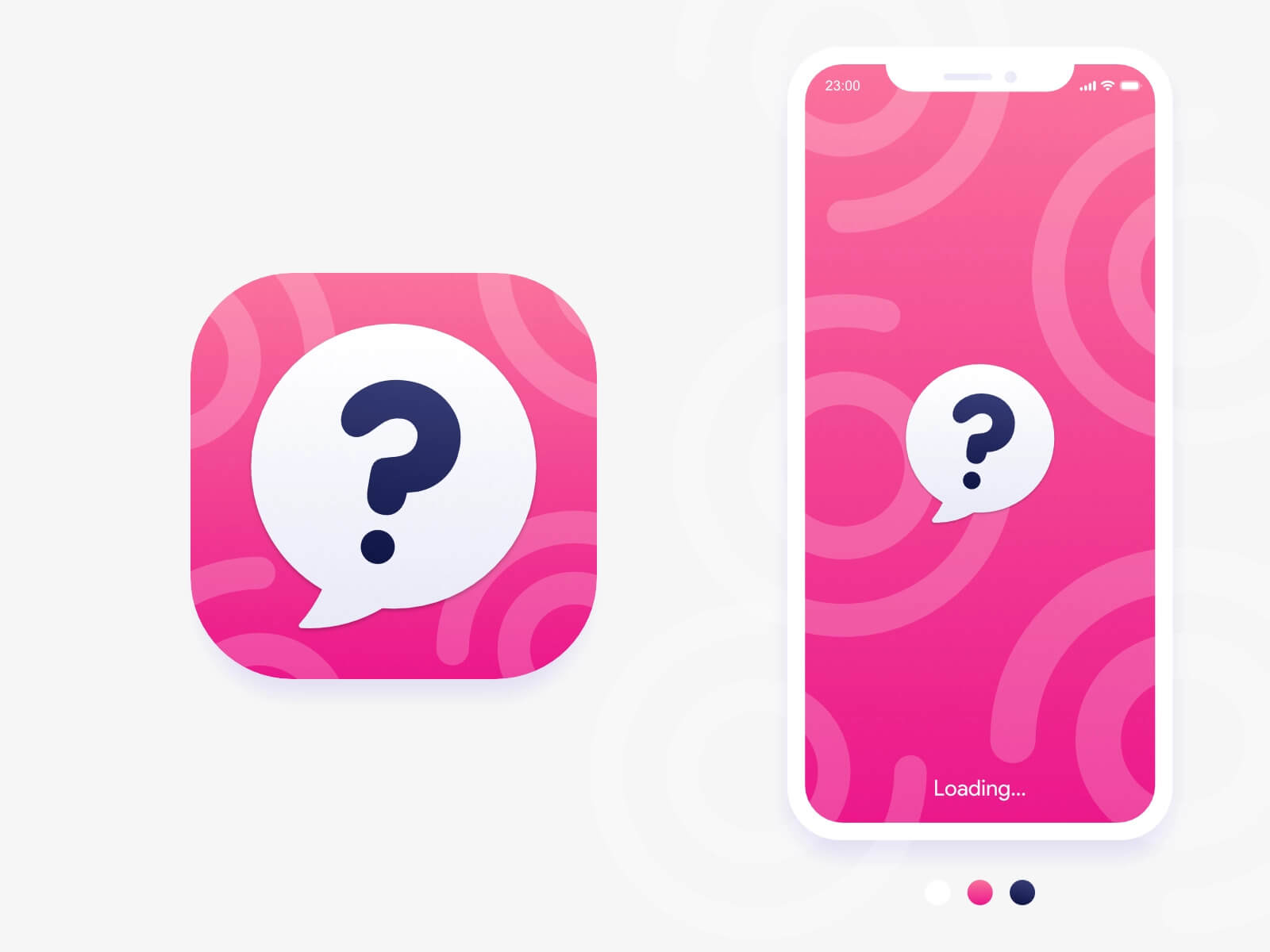
The splash screen is the second thing a user sees when installing the app for the first time. It can be as simple as just a logo and animation that demonstrates the app’s launch or feature a multi-step onboarding tutorial.
The customization abilities can vary greatly, for example:
- Will you only allow color change, or will your customers be able to change the layout and images on their splash screen?
- Will you allow your customers to upload their images and elements to the splash screen or offer a set of your own elements to choose from?
- Will you allow uploading a video to the splash screen? If you do, define the video size and format, and make sure the video looks good on screens of different sizes
Colors
The first basic thing your users should be able to change its color. Usually, white-label app providers offer color systems that include primary and secondary palettes.
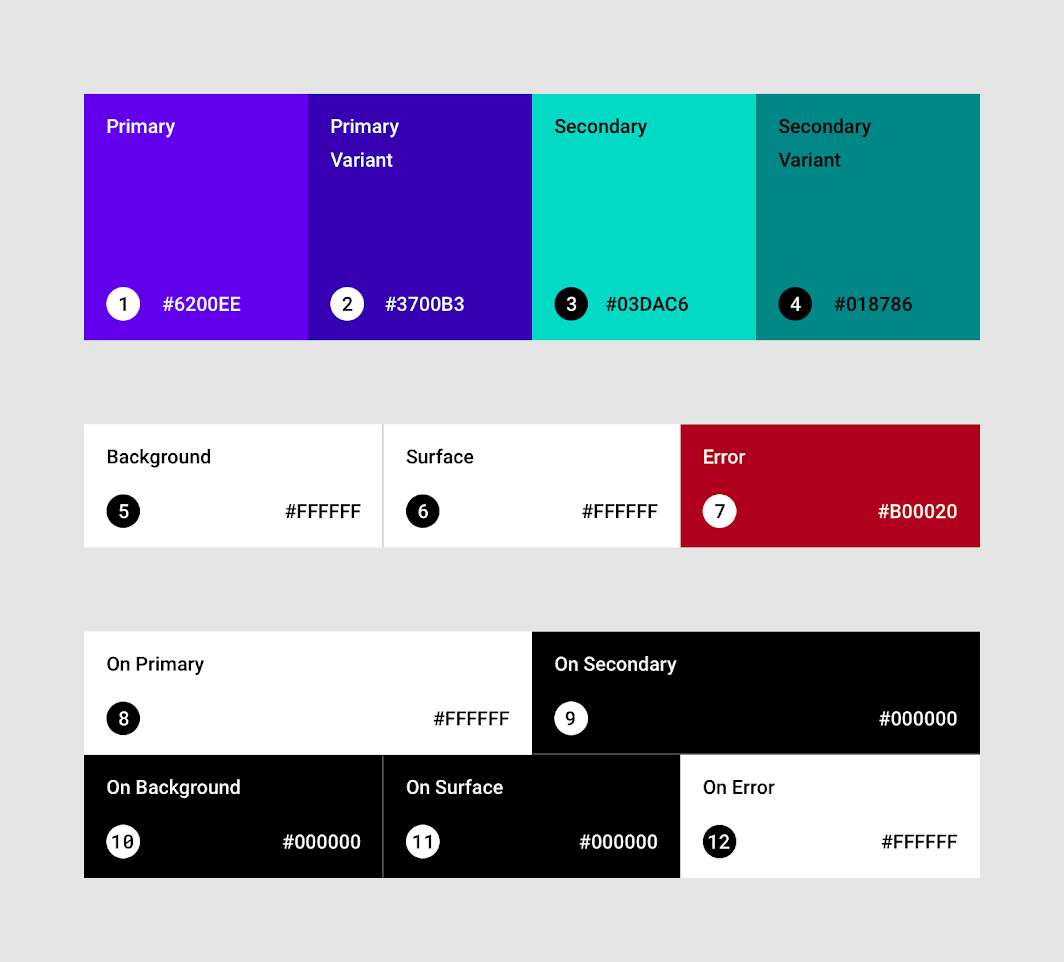
A primary color palette includes the color of the main app’s elements, like buttons and links. The secondary color palette is dedicated to backgrounds and sections that have different saturation, shades, transparency, and tones to help organize the app’s content.
Your customer should be able to change both primary and secondary color palettes. You can create presets with complementary colors to make the customization easier.
Templates, layouts, and components
The ability to customize UI components is the most important feature of a white-label application. With just a little tweaking, your customers will be able to add their unique touch to the app and express their brand identity through it.
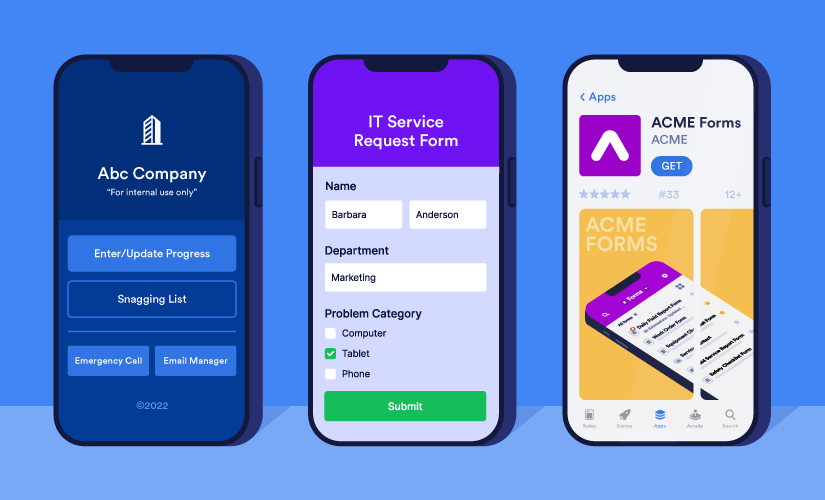
Like colors, there are primary and secondary UI components; for example, a primary button is usually larger and brighter than smaller secondary buttons. According to the best design practices, there should be only one primary button on the screen. Otherwise, you risk confusing users.
How do you give your customers the ability to customize the UI components? Allow them to change the components:
- Shape
- Color
- Font
- Size
You can also provide multiple options for layout by creating pre-determined templates or even developing a drag-and-drop interface, so your customers can create their own layouts.
White-label app architecture
As I already mentioned, the architecture of your white-label app will depend on your strategy and business model.
With SaaS-like solutions, the whole platform is hosted on a single cloud server so that users have access to their app versions from anywhere, and you have control over the updates.
With a backend-based model, you only provide your customers with a ready-made backend. They can handle the front end on their side or use your services to build a front-end part for them.
According to this model, you can either sell a copy of the backend so your customers can support it on their own or host it on your server and provide support to each tenant.
We at Mobindustry use a microservice architecture for our white-label apps. This allows us to create independent services that are responsible for different parts of the app. This architecture allows us to build and deploy code faster, isolate services, and develop modules independently.
The maintenance and support of microservice-based apps are also easier and faster, as you don’t need to worry that a single change in one module will affect the whole app.
The cost of creating a white-label app
The cost of building a white-label app varies greatly depending on multiple factors like:
- The number and complexity of features
- Your chosen model of distribution
- The number of platforms
- Tech stack
- The design complexity
- The number of third-party integrations
- Your team’s hourly rate
The scope of work and the team’s hourly rate are the two most influential factors that determine the final price.

You can save money significantly by outsourcing the development overseas. For example, a dedicated software development team in Ukraine can cost you up to 4 times less than the same team in the US.
The development of a basic white-label app will cost approximately $20,000 — 30,000 for a single platform. You can save around 30% of your budget by choosing a cross-platform technology if you want your app to work on both Android and iOS.
A fully-fledged white-label app with both backend and front-end parts costs around $60,000 and more, depending on its size and complexity.
Mobindustry experience
Our white-label projects
We at Mobindustry have built and rewritten multiple white-label apps for our clients and also created our own white-label solution called ScooterGO.
ScooterGO is a white-label cross-platform mobile application for scooter sharing. We developed it to allow our clients to get a high-quality app for just a fraction of the price, with no recurring payments, commitments, or issues.
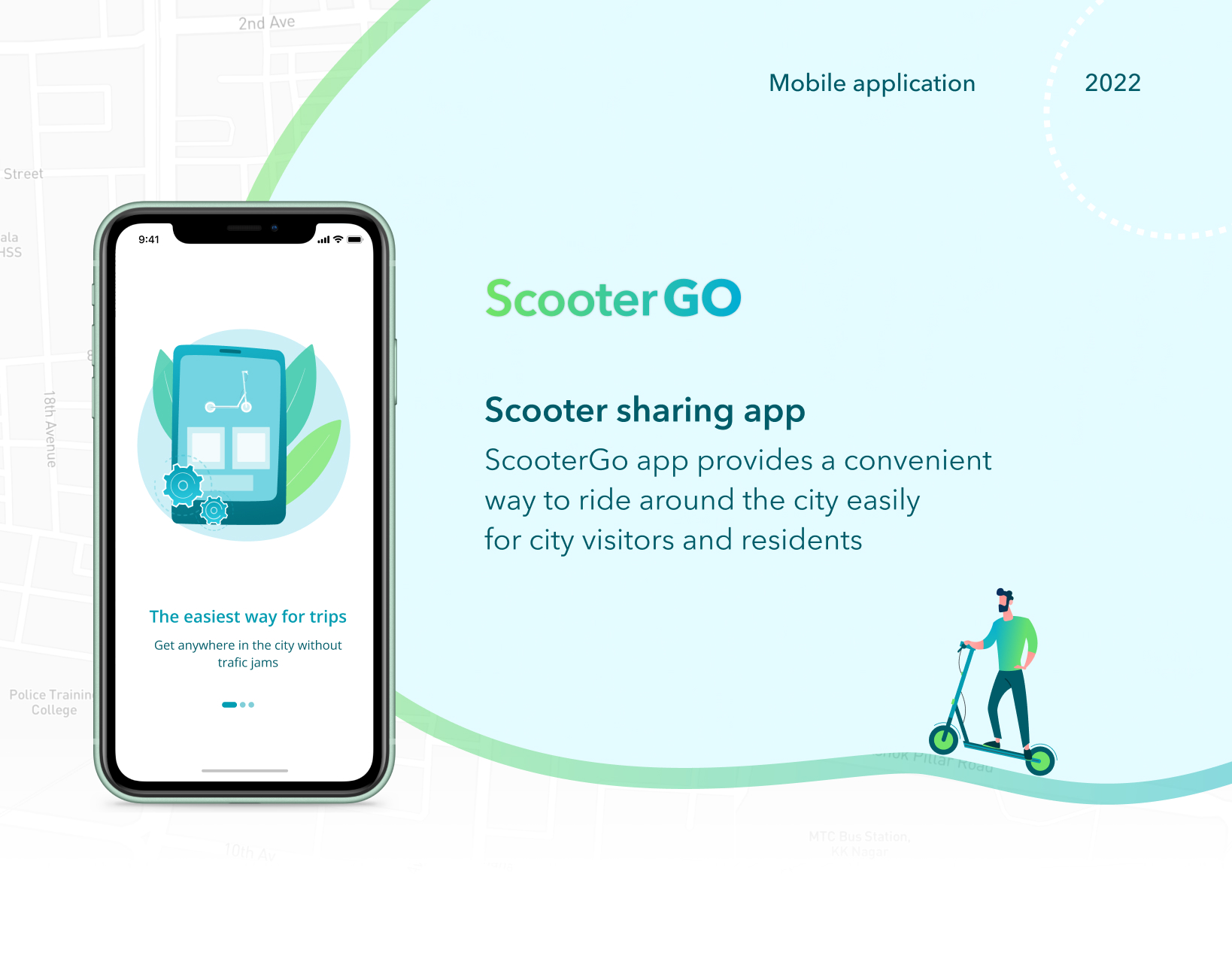
The scooter-sharing market is full of ready solutions. Some companies offer apps based on a SaaS model, so scooter-sharing business owners have to pay more and more as their business grows.
Often, these recurring payments are connected to the number of users or supported scooters. As you can imagine, once a business owner expands their operation, the subscription cost becomes unbearable and amounts to hundreds of thousands of dollars annually.
Other scooter-sharing businesses purchase full rights to the ready-made code of a white-label solution without knowing what’s under the hood. Soon enough, inconsistencies, errors, and bugs pile up — we’ve seen countless examples of this when clients came to us for quality assurance, additional customization, or maintenance.

Often, we needed to rewrite the code completely. This was when we decided to build our own white-label app. ScooterGO has everything a business needs to start operating in the scooter-sharing industry. We support scooter integrations and recommend hardware. If our clients need any additional customization, we can easily implement it.
Unlike other providers, we sell full rights to the code and have no hidden or recurring fees. Moreover, we offer maintenance and support, and our clients can always be sure of the code quality, longevity, and maintainability.
ScooterGO uses a microservice-based architecture to stay flexible and ease customization — with this pattern, we can easily add new functionality without affecting the whole code. For front-end development, we used Flutter — the best cross-platform technology on the market that allows you to deploy your app to Android and iOS platforms easily.

The admin panel we offer, along with the application, gives business owners and their staff full control over the whole scooter fleet.
White-label app code audit service
We at Mobindustry have experience fixing, advancing, and auditing white-label apps made by other companies. If you’ve purchased a white-label application and you’d like to know what’s under the hood and how you can add or remove features, we can definitely help you with our software code audit service.
Our developers can perform any work, from technical audit and code optimization to additional development and support. If the code is not sustainable, we can refactor or even rewrite it so you get a high-quality product you can use for years to come.
Key takeaways
White-labeling is a viable business strategy that you can scale and earn money for years by investing in its development once. There are two main strategies to choose from: sell access to a single platform that hosts multiple tenants and charge a recurring fee, or create a backend and customizable front-end and sell independent copies to businesses.
Both approaches have their pros and cons. The SaaS model allows you to easily maintain your product for all your clients, push updates automatically, and also get a stable revenue stream from subscriptions.
The backend model is cheaper to develop, and you can offer more customization abilities to your customers, as well as more control over their versions of your product. At Mobindustry, we have experience building SaaS software and developing white-label apps both from scratch and based on existing code. If you’d like to build a white-label app from scratch or make changes to your existing off-the-shelf solution, make sure to contact us!

